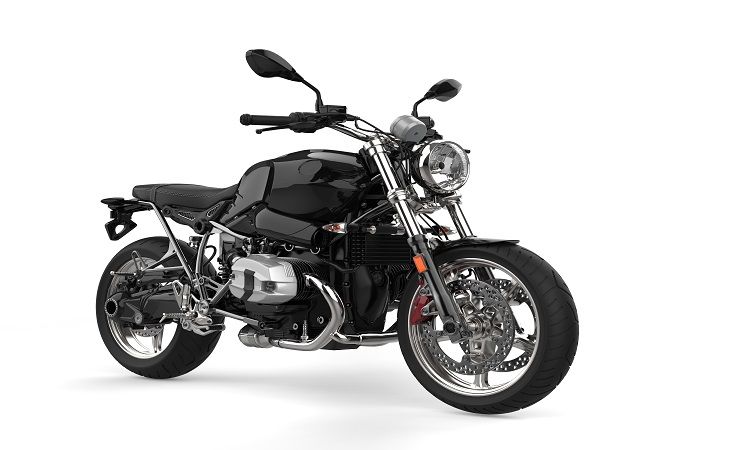Understanding Engine Braking in Motorcycles: How does it Work?
Understanding Engine Braking in Motorcycles: How does it Work?

Riding a motorcycle provides an unmatched sense of freedom, but along with the thrill, safety is essential. Understanding techniques like engine braking in a motorcycle can be a game-changer. This enhances your riding skills and helps prevent excessive wear on your brake components.
What is Meant by Engine Braking in a Motorcycle?
Engine braking involves slowing down your motorcycle using the engine rather than relying on the traditional braking system. Closing the throttle and shifting to a lower gear allows the engine to resist the bike’s forward motion, leading to deceleration. This is particularly useful when you need to control your speed gradually and efficiently, especially on slippery roads.
How Does Engine Braking in Motorcycle Work?
Closing the throttle cuts off airflow, reducing fuel burn and engine power. This slows the bike by decreasing the wheels' rotational speed.
There are two primary forces at play here:
1. Vacuum Effect:
When the throttle is closed, a vacuum is created in the intake manifold, which resists the engine’s rotation and slows it down.
2. Drivetrain Friction:
As the engine slows, friction in the drivetrain also contributes to the reduction in wheel speed.
When Do You Need to Use Engine Braking?
Engine braking is useful in various situations where you want to control the speed of your motorcycle without putting too much strain on the brake system.
• In Traffic:
When the traffic ahead slows down, engine braking is a great way to decelerate without relying entirely on your brakes. This reduces wear on your brake components, helping them last longer.
• On Steep Slopes:
Going downhill can put a lot of pressure on your brakes. Engine braking helps control your speed without overheating the brakes, especially in long descents.
How to Use Engine Braking in Motorcycle?
Using engine braking is simple but requires smooth coordination to be effective:
• Start by pressing the clutch lever to disengage the engine from the wheels. This allows the RPM to drop smoothly.
• After pressing the clutch, shift to a lower gear. Lower gears increase the engine resistance, which helps slow the bike down.
• Once you’re in a lower gear, release the clutch slowly. Doing this gradually avoids any jerks or sudden movements, ensuring the bike slows down smoothly.
Advantages of Engine Braking in Motorcycle
Engine braking offers numerous benefits, including:
• Reduces Brake Wear:
Engine braking relies on the engine to slow down, thus reducing the need for brake pad use. This minimises wear and extends the lifespan of your braking system.
• Prevents Brake Fade:
Engine braking helps prevent brake fade, a condition where excessive heat reduces braking power, especially when descending long hills or using the brakes heavily.
• Improves Fuel Efficiency:
While not a major fuel saver, engine braking slightly reduces fuel consumption by limiting fuel intake when you close the throttle. Over time, these small savings add up.
• Increases Control:
Engine braking enables smoother deceleration, which is particularly beneficial on wet or slippery roads. It helps maintain better stability and reduces the risk of skidding.
Conclusion
Mastering engine braking is essential for every rider. It improves control and safety and reduces wear on your braking system, offering smoother deceleration. Combined with a Comprehensive bike insurance policy, engine braking ensures a safer, more efficient ride.
FAQs about Engine Braking in Motorcycle
1. Is engine braking safe for all riders?
Yes, engine braking is a safe and effective technique, though beginners should practice it in controlled environments before using it in real-world conditions.
2. Can engine braking save fuel?
Engine braking can slightly reduce fuel consumption by limiting the fuel supply when you close the throttle. While the savings are minimal, it can add up over time.
3. Can engine braking help prevent skidding?
Yes, engine braking provides smoother deceleration, which is particularly useful on slippery or wet roads, helping to reduce the likelihood of skidding.
Disclaimer: The above information is for illustrative purposes only. For more details, please refer to the policy wordings and prospectus before concluding the sales.
RELATED ARTICLES
What is a Slipper Clutch: Definition, Working & Types
Quick Tips to Control Your Bike after a Tyre Burst
Anti-Lock Braking System in Bikes: How Does It Work?
Tips to Follow while Riding a Bike on a Slippery Road
4 Important Bike Riding Skills You Should Know










 Health Insurance
Health Insurance  Travel Insurance
Travel Insurance  Car Insurance
Car Insurance  Cyber Insurance
Cyber Insurance  Critical Illness Insurance
Critical Illness Insurance
 Pet Insurance
Pet Insurance
 Bike/Two Wheeler Insurance
Bike/Two Wheeler Insurance  Home Insurance
Home Insurance  Third Party Vehicle Ins.
Third Party Vehicle Ins.  Tractor Insurance
Tractor Insurance  Goods Carrying Vehicle Ins.
Goods Carrying Vehicle Ins.  Passenger Carrying Vehicle Ins.
Passenger Carrying Vehicle Ins.  Compulsory Personal Accident Insurance
Compulsory Personal Accident Insurance  Travel Insurance
Travel Insurance  Rural
Rural 











